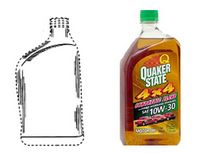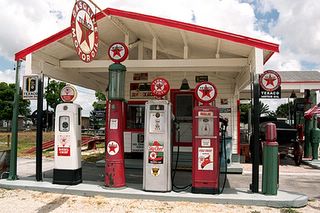Clear Bottle Appeal May Clarify TTAB Functionality Doctrine
Those of us who are still struggling to get a handle on the current state of functionality law should keep an eye on pending CAFC Appeal No. 05-1029 (docketed 10/15/04) from the TTAB's decision in Texaco Inc. v. Pennzoil-Quaker State Co., Opposition No. 91120520 (May 28, 2004) [not citable]. Texaco motored to victory in its challenge to registration of "the color clear used on containers for motor oil." The Board found the applied-for mark to be de jure functional and, in the alternative, lacking in acquired distinctiveness.

In its decision, the Board continues to follow its own path through the functionality forest. Although noting that "[a]ny discussion of utilitarian functionality" should begin with TrafFix Devices, Inc. v. Marketing Displays Inc., 523 U.S. 23, 58 USPQ2d 1001 (2001), it once again turned to CAFC precedent as the foundation for its decision. The Board pointed out that in Valu Engineering, Inc. v. Rexnord Corp., 61 USPQ2d 1422 (Fed. Cir. 2002), the CAFC "held that this decision [TrafFix] does not alter the oft-cited case of its predecessor in the area of functionality, In re Morton-Norwich Prods., Inc., 213 USPQ 9 (CCPA 1982)":
"The Morton-Norwich case, cited by both parties to this proceeding, clarified that in determining whether the configuration of a plastic spray bottle container was de jure functional, one needs to look to the competitive need to copy the claimed design feature."Although TrafFix seemingly ruled out a "competitive need" analysis in cases of utilitarian functionality, the CAFC and the TTAB continue to consider alternative designs as relevant to the issue of "whether a feature is functional in the first place." Valu Engineering, 61 USPQ2d at 1427.
The Board found the evidence under the third Morton-Norwich factor (the availability of alternative, functionally-equivalent designs) to be the most damaging: Pennzoil-Quaker introduced the clear bottle after determining that there was an "obvious competitive advantage" to displaying the coloration of its products, even though the clear bottle is more expensive to manufacture.
Furthermore, under the second Morton-Norwich factor (advertising that touts the design's utilitarian advantages), Applicant occasionally promoted the utilitarian benefits of the clear bottle: e.g., consumers can see what they are buying; it gives consumers the impression that the oil is pure and clean; and consumers can tell exactly how much oil has been used.
Thus Texaco made a prima facie showing of de jure functionality: it pointed out "numerous non-reputation related reasons for adopting a clear container, and these are competitive reasons that should not be denied to applicant's competitors." Pennzoil-Quaker failed to rebut that showing.

For purposes of completeness, the Board also considered Pennzoil-Quaker's evidence of acquired distinctiveness, noting that in a case such as this the Section 2(f) showing must be "much greater" than for a descriptive term, a slogan, or a label. The Board took particular note of "the ubiquity of nearly identical packaging for many related automotive products." Despite Pennzoil-Quaker' expenditure of millions of dollars promoting its motor oils, its prominent use of such slogans as "The Difference is Clear," and its inclusion of the statement "CLEAR BOTTLE IS A TRADEMARK OF PENNZOIL QUAKER STATE COMPANY" on the containers, Pennzoil-Quaker's proofs fell short on the Section 2(f) issue.
Many of the federal courts have struggled with interpretation and application of the Supreme Court's TrafFix ruling. The TTAB and the CAFC have chosen to adhere to an approach that they find comfortable, one they have applied since the 1982
As a final note, a fuller discussion of the Board's functionality decisions over the last few years may be found in my recent article, "Trade Dress and the TTAB: If Functionality Don’t Get You, Non-Distinctiveness Will."
Text Copyright John L. Welch 2005. All Rights Reserved.

0 Comments:
Post a Comment
<< Home